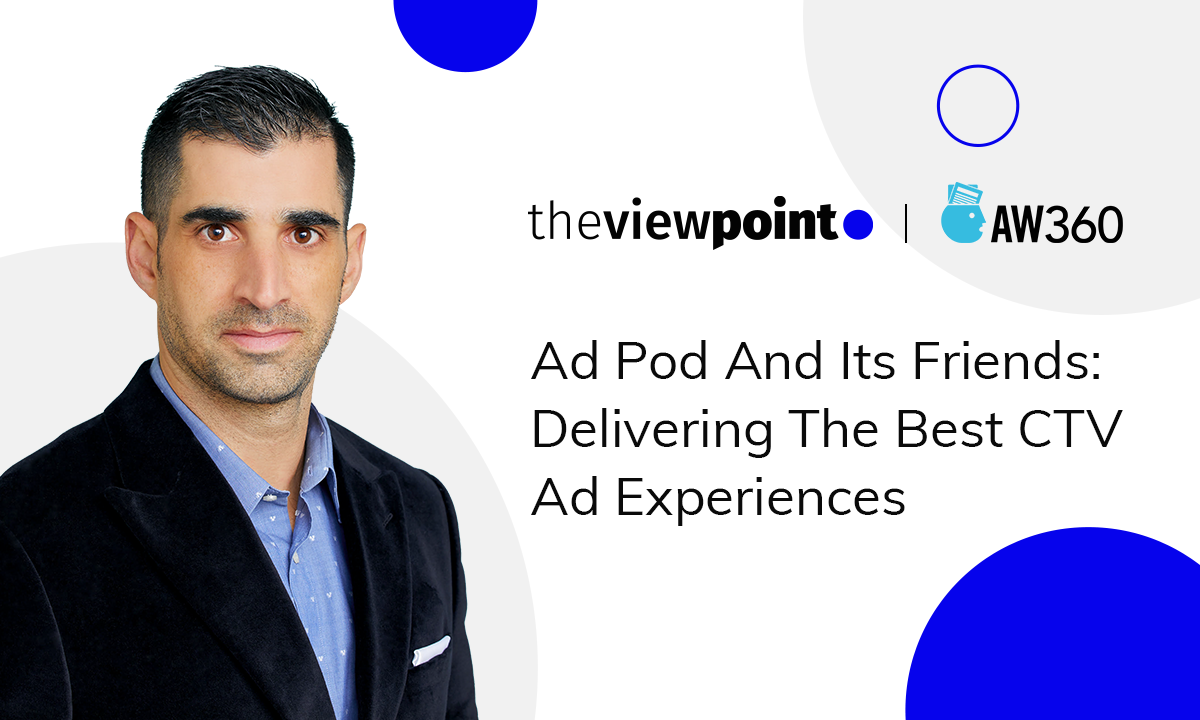
DSP vs SSP: the Difference between CTV Advertising Platforms
Advertising on connected TV (CTV) platforms is gradually becoming a necessity for marketers striving to reach new quality audiences. Over-the-top video content streaming and CTV advertising has firmly taken root in US households. According to Leichtman Research Group, over 82% of homes in the United States already have at least one connected TV device (as of 2021), while nearly 40% of adults watch CTV content daily. In addition to that, CTV ad spend in 2021 is expected to reach $11 billion, as stated in research by eMarketer. This goes to show how beneficial it might be to join the bandwagon in time.
On CTV there are two main ad management platforms: DSPs and SSPs. Advertisers that are not familiar with the technical side of the business often get confused between these two. So let’s take a look at the main differences between DSP and SSP platforms, and try to understand why the formulation “SSP vs DSP” makes no sense at all.
How Buyers See CTV Ad Exchange
From the advertiser’s perspective, media buyers use programmatic tools as mediators in their ad buying workflow. These programmatic tools are called Demand Side Platforms.
Simply put, DSPs are software solutions that can provide access to a variety of inventory sources like mobile, CTV, or web in one place (or specialize in one type of inventory). Through a single interface, ad buyers can manage their preferences and find the desired ad spots in a matter of clicks. Ad inventories are distributed based on automatic auctions where algorithms match demand and offer requests. Media buyers also benefit from data provided by these platforms to improve targeting.
DSPs are not really suitable for small businesses, since ad exchange is usually performed in high volumes. Instead, advertising and marketing agencies can freely utilize DSP advertising for launching wide-ranging programmatic campaigns on behalf of their clients and benefit from precision and reliability.
The Main Features and Advantages of a DSP
There are many demand-side platforms that serve different objectives and include particular features to achieve them. We at TheViewPoint, however, think that a proper CTV DSP should include a certain set of tools to ensure streamlined ad management.
Extensive feedback. Advertising profiles of big ad tech companies like Google or Amazon only provide limited data insight on ad campaign performances. DSP tools have to provide enhanced and transparent reporting options for advertisers.
Data management. Data is the most valuable asset in any advertising. Through data, we learn who our clients are, what they like, and how to reach them. A proper DSP includes tools that simplify advertiser’s data management. For instance, DMPs – data management platforms. A well-integrated DMP can save a fortune with granular reporting, access to restricted data sources, and other features.
User screening. A DSP should support setting up multiple accounts with different access levels and other settings since ad campaigns may target different types of viewers.
Targeting configuration. Effective targeting requires lots of things to be taken care of. In order to achieve that, advertisers need to include criteria like context categories, geographics, IPs, ad mediums, demographics, devices, operating systems, screen sizes, time, and many other parameters. A good DSP allows advertisers to target all these independently.
Brand safety. Another important point is security. Advertisers should be able to disable any content category if they think it can damage their brand reputation – directly from their DSP profile.
CTV Ad Exchange from Publishers’ Perspectives
So what is an SSP? SSPs (supply-side platforms) are software solutions that deal with advertising exchange from the publishers’ side of things, i.e. sell ad space, optimize deals, and provide analytics. Each SSP has a dashboard for publishers to control their inventory. There, they manage position in an ad pod, format, minimal price, and other parameters before that spot proceeds to an auction.
Supply-side platforms are also programmatic, which is used to automate ad impression sales and to make the process as profitable as it can be for a publisher. To make that happen, SSP often uses a real-time bidding system. Through SSPs, sellers can also deliver their offers to multiple DSPs or various ad exchanges. Ad exchange platforms then compare demand and supply to sell inventory to the highest bidder.
The Main Features of an SSP
Like DSPs, supply-side platforms are not the same and differ by usage and specifics. Here are the most important features we recommend publishers to look for:
Multiple demand sources. The more advertisers see the offer, the better chance inventory will be sold at a higher price.
Ad formats variety. Monetization opportunities for publishers improve as the range of SSP advertising support for different ad types and mediums rises. This means more advertisers will be willing to place ads on an inventory with a universal ad format set than the one with limited choice. CTV supports lots of dynamic and static ad formats to choose from: carousels, QR-supported, TV2 Mobile, video pre/mid/post rolls, etc., and a proper SSP should support them all.
Header bidding. Header bidding technology is a solution that provides sellers with the ability to widen their pool of buyers. As we already know, the wider the range of buyers, the higher price for display publishers can charge. Header bidding is used in the CTV environment to arrange a unified auction for impressions by sending bid requests to a large number of ad networks at a time.
Content control. Just like how DSPs can allow advertisers to alter content preferences to avoid places with questionable reputation, SSPs allow publishers to filter buyers with inappropriate creatives. A good supply-side platform should always have blacklisting settings and automatic filters that will protect a resource from unwanted displays.
Safety standards. We recommend publishers to go with SSPs that support IAB (Interactive Advertising Bureau) standards of CTV advertising. These standards are distributed through licenses and issued to the most credible ad platforms, meaning that the ads would be only served on good-quality apps. This improves buyers’ trust.
White label model. White label is an SSP advertising trend that simplifies ad tech entry thanks to a pre-built advertising model that reduces costs and speeds up installation. A white-label SSP means publishers can get their own RTB platform and benefit from transparency and their own demand sources with little investment. It also supports inventory listing, DSP endpoint setups, and performance optimizations.
Takeaways
DSPs are programmatic-powered software solutions that help advertisers to deliver their creatives to CTV ad placements automatically. A proper DSP is advised to have a set of tools and instruments such as data management and targeting configuration settings. SSPs are similarly functioning programmatic platforms where publishers set up their offerings, optimize deals, and gather statistics. Both SSP and DSP platforms are indispensable for CTV ad exchange since they simplify many processes, secure deals, and automate negotiations. Therefore, there’s no stand-off called “DSP vs SSP” as they are responsible for different tasks and are used by different specialists.
Related
Programmatic TV Tax Day is Not Just April 15. It's Every Day
This blog examines the significant "AdTech tax" in Connected TV advertising, advocating for Tatari's direct integration with publishers to bypass hidden fees, resulting in substantial cost savings and enhanced transparency.
Read more
Ad Pod And its Friends: Delivering the Best CTV Ad Experiences
Aiming to stand out from the crowd and surpass consumers’ expectations, CTV advertisers have to be allied with publishers and very savvy at applying innovative advertising techniques, like frequency capping, competitive ad separation, and deduplication. Though still raising a lot of eyebrows, these tools have already become the next big thing in the advertising world. So, before diving deep into the details of ad pod management, let’s take a sneak peek behind the scenes of modern CTV play.
Read more
Everything You Need to Know About Real-Time Bidding
As programmatic advertising is gaining momentum, RTB or real-time bidding comes in. In fact, most platforms in ad tech today are RTB enabled. But what does that actually mean? What is an RTB platform and why is it so important for digital marketers? Let’s get the answers to these questions and more.
Read more


